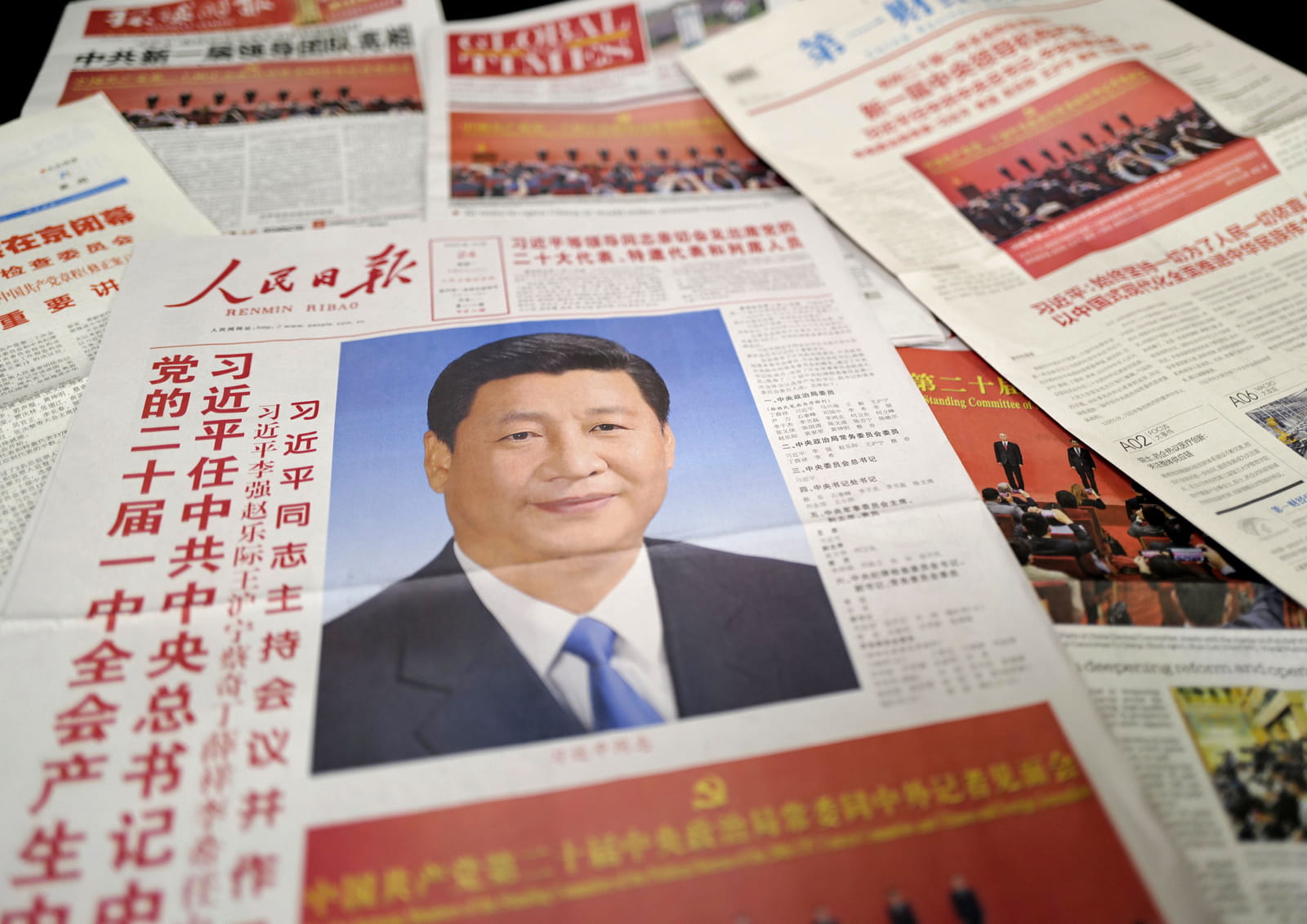For understanding China’s stance and intentions on foreign affairs, few sources offer clearer insight than the Zhong Sheng commentaries published in the official People’s Daily newspaper. These occasional editorials – the pseudonym “Zhong Sheng” meaning Voice of China – represent the authoritative view of the Chinese Communist Party, not that of an independent individual but by the Party-state apparatus specifically to signal official positions.
The 2025 commentaries so far reveal a sophisticated messaging strategy that is a combination of reassurance with assertiveness, aimed simultaneously at bolstering domestic legitimacy and global influence. With most commentaries aimed at the United States, they provide insights into the Chinese perspective of bilateral relations.
Early in the year, the tone was notably defensive, primarily responding to US actions, particularly the imposition of unilateral tariffs and protectionist measures. These editorials emphasised China’s resilience and right to retaliate, painting US actions as self-defeating and destabilising to the global economy.
By the middle of this year, however, a rhetorical shift had emerged. Commentaries surrounding economic talks held in Geneva and London began emphasising the establishment of consultation mechanisms, substantive tariff rollbacks, and pragmatic cooperation frameworks. This evolution reflects Beijing’s assessment that US pressure tactics were failing to produce leverage, hinting at growing confidence in China’s ability to engage the United States on equal terms.
China positioning itself as a defender of the global economic order is a consistent theme in the editorials.
The ideological foundation of these editorials rests on two fundamental principles: mutual benefit and equality. The term “win-win cooperation” appears repeatedly as the essential framework through which China insists a relationship must operate. The editorials reinforce the idea that both China and the United States stand to gain only through interdependence.
Simultaneously, “equal footing” is presented as a diplomatic red line. China’s insistence that no dialogue will be accepted under duress is repeated. Articles declare that “Pressure, threats and blackmail are not the right way to deal with China.”
The Zhong Sheng pieces put on full display Beijing’s confidence in its economic resilience. The commentaries highlight successful cooperation examples such as Tesla’s new Shanghai energy storage gigafactory and the consistent rise in Chinese imports of US agricultural products. These examples serve two purposes. First, they reinforce the narrative that China is open, cooperative, and indispensable to global commerce. Second, they offer selective evidence that mutual benefit is already taking place. As one March commentary explained, the Tesla project exemplifies the “Shanghai speed” meeting “Tesla speed.” This narrative construction emphasises areas where cooperation is tangible, while acknowledging that “differences and frictions” are normal in bilateral relations and can be solved through dialogue.
One of the most interesting rhetorical strategies evident in the 2025 Zhong Sheng commentaries is the invocation of American economic history to delegitimise protectionism. The April editorials trace a direct line between past US tariff policies such as the infamous Smoot-Hawley Tariff Act and economic recession. The messaging is clear: that trade wars are not only reckless but doomed to backfire.
To further this case, articles cite American voices and institutions to argue that the Trump administration actions are not just harmful to China, but self-destructive. As one editorial states, the tariff stick is a “boomerang” destined to hit the US economy itself. These arguments are designed not only to strengthen China’s narrative but to influence US domestic discourse by citing their own experts and institutions.
China positioning itself as a defender of the global economic order is a consistent theme in the editorials. In repeated attacks on US unilateralism, the Zhong Sheng articles emphasise China’s role in safeguarding the multilateral trading system centred on the World Trade Organisation. A commentary warned of the dangers of undermining multilateral institutions, framing China as committed to an “open and inclusive international trade environment” that benefits all nations.
This positioning serves multiple functions. It appeals to developing countries in the Global South, whose interests are often marginalised in bilateral trade wars, reinforces China’s narrative as a responsible global power, and seeks to isolate the United States diplomatically by casting its protectionist measures as breaking global economic norms.
Zhong Sheng articles have also devoted space to people-to-people diplomacy. A recent commentary stated the “future of China-US relations lies in the youth,” and portrayed young Americans as potential “ambassadors of friendship.” This soft power initiative serves to reinforce China’s narrative of openness and cultural confidence and seeks to counteract growing US public scepticism toward China while fostering a peaceful international image.
From defending red lines on sovereignty and equality to showcasing economic interdependence and projecting global responsibility, the Zhong Sheng editorials reveal a Party-state apparatus that is confident, deliberate, and increasingly skilled at narrative shaping. Rather than reacting to American pressure, the CCP has used the Zhong Sheng platform to articulate a coherent worldview of a China willing to engage as an equal, one prepared to cooperate, but never to concede core interests, and committed to economic openness on its own terms.

